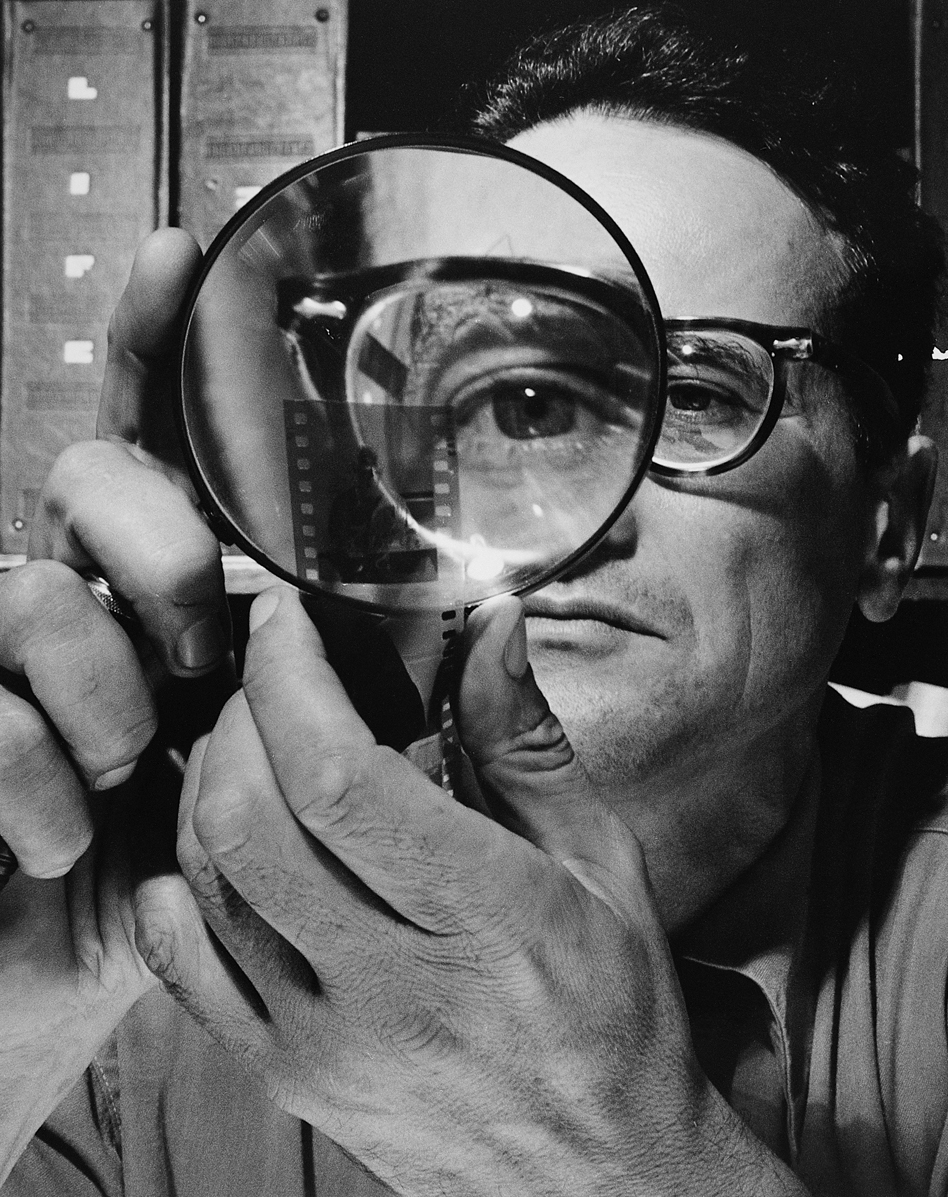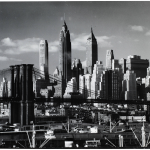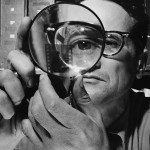The 1951 portrait of Dennis Stock by Andreas Feininger stands as a remarkable testament to the photographer’s artistry and innovation. This striking image, which first surfaced in a 1955 issue of LIFE magazine, showcases the intricate relationship between a photographer and his subject, encapsulating a moment that feels both timeless and surreal. Many may recognize this iconic photograph, yet few are aware of the compelling narrative that underpins its creation, a story intertwined with the evolution of LIFE magazine photography during a transformative era. For photography enthusiasts, the portrait is not only a glimpse into Dennis Stock’s life but also a captivating chapter in the history of iconic photographs that shaped visual culture in the mid-20th century. As we delve deeper into the stunning artistry of Andreas Feininger, we uncover not just a portrait, but a moment that left an indelible mark on 1951 portrait history, a piece worthy of admiration and insight.
Exploring the 1951 representation of Dennis Stock, crafted by the lens of Andreas Feininger, invites us to contemplate the nuances of photographic storytelling. This portrait, emblematic of its time, transcends mere imagery to fuse together identity, profession, and artistry within a singular frame. As we analyze Feininger’s methodical approach to capturing significant moments, we also unlock the significance of LIFE magazine’s legacy in documenting extraordinary lives through visual narratives. This discussion not only celebrates Stock’s journey but also highlights the artistry that defines renowned photographers of the era, including masterpieces that contribute to our understanding of mid-century American culture. In this exploration, we will unearth the deeper meanings and context behind this iconic image, engaging with the threads of history woven throughout this remarkable piece.
The Impact of Andreas Feininger’s 1951 Portrait
Andreas Feininger’s 1951 portrait of Dennis Stock stands out as a monumental piece in the history of LIFE magazine photography. The uncanny yet compelling visual quality of Stock’s image captures a sense of intrigue, which has led to its frequent reproduction and recognition. Feininger’s ability to delve into the psychological aspects of his subjects is evident, and this particular photograph reflects his mastery in portraiture. By using dramatic lighting and a unique compositional choice, he created an image that resonates with viewers, making it an iconic photograph of the mid-20th century.
Moreover, Feininger’s meticulous approach to photography cannot be overlooked. His decision to set aside the portrait for other projects reveals a profound commitment to artistic vision. He aimed to create a narrative that showcased how the tools and artifacts of everyday life intersect with personal identity—a theme that feels increasingly relevant today. This portrait does not merely represent a moment in time; it invites viewers to reflect on the complexities of identity, encapsulated through the lens of a camera, making it a significant contribution to 1951 portrait history.
Dennis Stock: Collaborator in Iconic Photography
Dennis Stock played a crucial role in shaping the iconic image captured by Andreas Feininger. As a photographer himself, Stock brought a unique perspective to their collaboration, which contributed to the dynamic character of the portrait. The fluid exchange of ideas and experimentation with lighting between the two artists is what set this portrait apart. Stock’s suggestion to use a spotlight became a pivotal moment in photography for both men, helping to illuminate not only his face but also his future as a photographer. Both men were able to create a definitive representation that would carry Stock’s legacy.
Additionally, their collaboration represents a larger trend in photography during the post-war era, where personal stories often intertwined with broader cultural narratives. The interactions between Feininger and Stock exemplify how two creative minds can collaborate to produce a photograph that transcends mere likeness. This partnership solidified their careers—Stock as a notable photographer and Feininger as a revered LIFE magazine contributor. Their portrait remains a dialogue of artistic expression and photographic legacy, highlighting the importance of collaboration in the art of photography.
LIFE Magazine: The Home of Historical Portraits
LIFE magazine has long been recognized as a platform for some of the most iconic photographs in modern history. From its inception, it sought to blend journalism with art, showcasing the culturally significant moments through striking imagery. The portraits featured in its pages, such as Feininger’s of Dennis Stock, reflect this ethos by providing insight into the lives and times of its subjects. Each photograph tells a deeper story, enriching the viewing experience and allowing readers to connect with the figures captured in the lens.
The 1951 portrait of Dennis Stock exemplifies the unparalleled impact of LIFE magazine’s editorial vision. While the magazine faced criticism regarding the portrait’s suitability for publication, it ultimately became a testament to its artistic merit. Feininger’s work not only marked a moment in photography but also highlighted LIFE’s role in shaping public perception through powerful visual storytelling. This iconic imagery, combined with compelling narratives, solidified LIFE magazine’s legacy in chronicling the history of the 20th century.
The Evolution and Legacy of Portrait Photography
The evolution of portrait photography has been shaped by various artistic movements and technological advancements. From the early days of daguerreotypes to the more sophisticated techniques seen in the work of photographers like Andreas Feininger and Dennis Stock, portraiture has continually adapted to capture the essence of the human experience. The deliberate choices made in lighting, composition, and subject matter reflect broader trends in society, making portraits a profound way to study history and culture.
As photographers like Feininger pushed the boundaries of conventional portrait photography, they introduced new layers of meaning into their work. Feininger’s approach exemplifies the blend of artistic expression with a deep understanding of the subject’s identity. The influence of such iconic photographs extends beyond their immediate context, inspiring a new generation of photographers to explore identity, emotion, and the tools that shape our existence. The legacy of the 1951 portrait of Dennis Stock continues to resonate today, serving as a benchmark for excellence in the art of photography.
Exploring the Art of Collaboration: Feininger and Stock
The collaboration between Andreas Feininger and Dennis Stock not only produced a remarkable portrait but also illustrates the creative process in photography. Collaborations like this often lead to groundbreaking work that pushes artistic boundaries. Feininger’s methodical approach to planning and Stock’s spontaneous suggestions came together to create an image that is both striking and revealing. Their shared vision allowed them to explore various techniques and dynamics that photographers often experiment with but may not achieve without partnership.
In the realm of portrait photography, collaboration can lead to extraordinary results, as seen with Feininger and Stock. Their ability to push each other creatively allowed for innovative ideas to flow freely, enhancing the photographic experience. This partnership serves as a reminder that the collaborative spirit in photography is essential to unlocking new perspectives and creative potentials. Through their joint efforts, they crafted an iconic representation of professional identity, which continues to influence photographers and artists alike.
Stylistic Techniques in Feininger’s Work
Andreas Feininger’s unique stylistic techniques set his photography apart from his contemporaries. He had an exceptional ability to manipulate light and shadow, a characteristic evident in the captivating portrait of Dennis Stock. By utilizing dramatic lighting techniques, Feininger managed to transform the subject into a more enigmatic figure, one that draws viewers in and provokes thought. This mastery of light not only emphasizes physical features but also adds a layer of psychological depth to the image.
Feininger’s careful attention to detail and composition illustrates a deep understanding of the visual language of photography. His portraits often contain elements that tell a story beyond what is immediately visible. The choice of props, backgrounds, and the subject’s pose all contribute to the narrative he wishes to convey. This intricate dance of visual storytelling in his portraits, particularly with the Dennis Stock photograph, reflects a sophisticated approach to portraiture that has influenced many photographers and remains relevant in contemporary practices.
The Cultural Significance of Iconic Photography
Iconic photography serves as a powerful tool for cultural expression and historical documentation. The images that emerge from cultural movements, like those captured by Andreas Feininger and Dennis Stock, encapsulate societal changes and emotional truths. The 1951 portrait of Stock has grown to symbolize a certain era in photography, showcasing how even a single image can transcend its moment and speak to generations. Photographers often have the capacity to reflect and shape public perception, making their work essential in understanding cultural narratives.
Feininger’s portraits are prime examples of how photography can evoke strong emotional responses while preserving historical significance. The dialogue between the photographer and the subject can encapsulate the zeitgeist of the time, cementing the photographic work as a cultural artifact. These images become touchstones that help societies reflect on their identity, values, and transformations over the years. The legacy of iconic photography like Feininger’s serves not only as an artistic benchmark but as an enduring reminder of the power of visual storytelling.
Andreas Feininger’s Influence on Future Generations
Andreas Feininger’s approach to photography has left a lasting impression on future generations of photographers. His innovative techniques and commitment to narrativity continue to inspire emerging artists. The nuances of his work, such as his ability to blend art with deep psychological insights, have become essential lessons for aspiring photographers. Feininger’s legacy is evidenced through the study of not just his iconic photographs, like the one of Dennis Stock, but the underlying principles that guide thoughtful photography practices today.
Moreover, Feininger’s mastery in capturing the interplay between subject and environment has influenced a wide spectrum of visual art. Many contemporary photographers have adopted his methods, pushing the limits of what portrait photography can achieve. The dedication to portraying the multifaceted nature of identity, as viewers have witnessed in Feininger’s work, serves as a foundational ethos that continues to echo through the work of those who followed in his footsteps. His contributions remain vital to the ongoing dialogue in artistic photography.
The Contemporary Relevance of Feininger’s Portraits
In today’s digital age, the relevance of Andreas Feininger’s portraits continues to resonate strongly within the photography community. The themes of identity, expression, and the human experience portrayed in his work persist in contemporary photography. As photographers grapple with modern storytelling techniques, Feininger’s insistence on the significance of personal narrative remains deeply impactful in shaping visual discourse today. His methods encourage a thoughtful exploration of how contemporary subjects express themselves in a rapidly evolving world.
Furthermore, the revived interest in vintage photography techniques highlights the ongoing appreciation for Feininger’s artistic vision. Contemporary photographers are reinterpreting his style, utilizing lessons from his work to frame their narratives. With a focus on authenticity and emotional resonance, Feininger’s portraits, particularly that of Dennis Stock, emerge as essential touchstones for understanding the evolution of portrait photography. The lasting legacy of his artistic contributions inspires a renewed commitment to personal storytelling through photography.
Frequently Asked Questions
What is the significance of Andreas Feininger’s portrait of Dennis Stock?
Andreas Feininger’s portrait of Dennis Stock, taken in 1951, is renowned for its striking and artistic representation, capturing the essence of the subject’s identity intertwined with his camera. This iconic photograph not only reflects Feininger’s meticulous style but also tells a rich story of creative collaboration between the two photographers, making it a highlight in LIFE magazine’s history.
When was the 1951 Andreas Feininger portrait of Dennis Stock published?
The iconic Andreas Feininger portrait of Dennis Stock was first published in a June 1955 issue of LIFE magazine, four years after it was originally taken. This delayed publication adds intrigue to the photograph’s backstory, showcasing Feininger’s careful artistic process.
How did Andreas Feininger create his portrait of Dennis Stock?
Andreas Feininger created the striking portrait of Dennis Stock by experimenting with lighting techniques. With Stock’s suggestion to use a spotlight, Feininger captured the image in a moment of collaboration, emphasizing the power of the portrayal. This innovative approach showcases Feininger’s unique artistic vision and commitment to portraying identity through photography.
What elements contribute to the iconic status of Andreas Feininger’s portrait?
The iconic status of Andreas Feininger’s portrait of Dennis Stock stems from its dramatic lighting, the emotional connection evident in the subject’s expression, and the profound themes of identity and creativity intertwined with the tools of one’s profession. The photograph’s subsequent recognition in LIFE magazine further solidified its place in photography history.
How does Andreas Feininger’s work compare to other LIFE magazine photographers?
Andreas Feininger’s approach to photography, particularly in his portrait of Dennis Stock, contrasts with other LIFE magazine photographers through his meticulous preparation and creative experimentation. While many photographers focused on candid moments, Feininger’s structured and intentional style, exemplified in this famous portrait, showcases a deep exploration of identity and artistic collaboration.
What impact did the 1951 portrait have on Dennis Stock’s career?
The 1951 portrait by Andreas Feininger played a crucial role in propelling Dennis Stock’s career as a prominent photographer. The powerful image showcased in LIFE magazine not only brought recognition to Stock but also highlighted his collaborative spirit with Feininger, paving the way for a successful and illustrious career in photography.
Why was the 1951 portrait of Dennis Stock considered for the LIFE magazine cover?
The 1951 portrait of Dennis Stock was considered for the LIFE magazine cover due to its striking visual impact and emotional depth. Some editors believed it could be the best cover image ever; however, opinions varied, and concerns about its intensity led to its eventual exclusion from the front cover, which has contributed to its legendary status in photographic history.
In what ways is Feininger’s portrait of Dennis Stock a reflection of 1950s photography?
Feininger’s portrait of Dennis Stock exemplifies 1950s photography through its innovative use of lighting, strong composition, and focus on the individual’s relationship with their craft. As part of the era’s broader artistic movement, the photograph encapsulates a moment in time where personal narratives and visual storytelling became increasingly intertwined.
| Key Aspect | Details |
|---|---|
| Portrait Title | Andreas Feininger’s 1951 Portrait of Dennis Stock |
| Publication | First appeared in LIFE magazine in June 1955 |
| Subject | Dennis Stock, a young Army veteran and photographer |
| Creation Process | Feininger used a spotlight to capture the emotive power of Stock’s expression |
| Reception | Controversial; some believed it to be the best cover ever, while others found it gruesome |
| Legacy | Both Feininger and Stock are celebrated for their contributions to photography |
| Final Note | Feininger’s portrait of Stock became a notable cover for Loengard’s book |
Summary
Andreas Feininger’s portrait stands as a testament to the art of photography, captivating audiences with its unique composition and emotional depth. Created in 1951 and later published in LIFE magazine, this image encapsulates the synergy between photographer and subject, revealing the collaborative efforts behind its striking aesthetic. While initially met with mixed reactions regarding its suitability for publication, this iconic portrait has ultimately solidified its place in art history, reflecting the profound impact of both Andreas Feininger and Dennis Stock on the photographic world.





